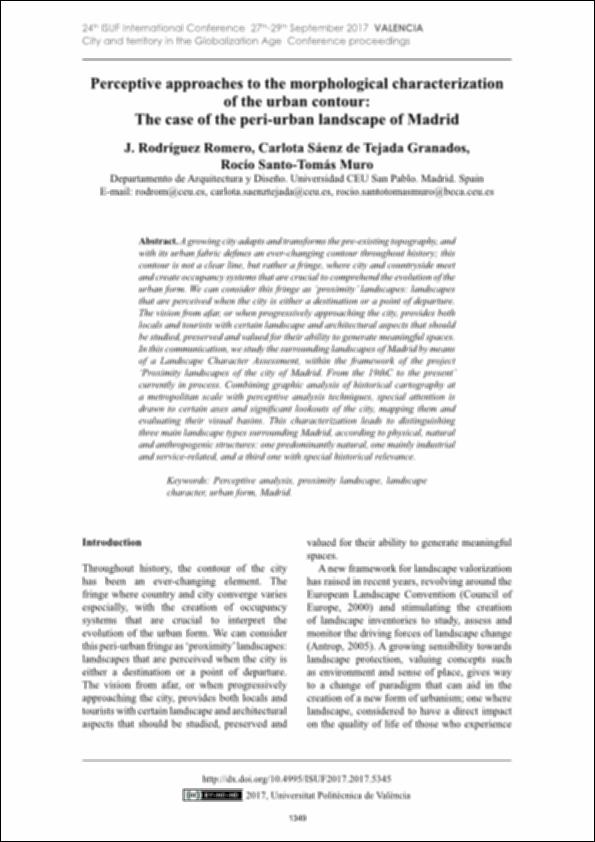Por favor, use este identificador para citar o enlazar este ítem:
http://hdl.handle.net/10637/14367Perceptive approaches to the morphological characterization of the urban contour: The case of the peri-urban landscape of Madrid
| Título : | Perceptive approaches to the morphological characterization of the urban contour: The case of the peri-urban landscape of Madrid |
| Autor : | Rodríguez Romero, Eva Juana. Sáenz de Tejada Granados, Carlota Santo-Tomás Muro, Rocío |
| Materias: | Perceptive analysis; Proximity landscape; Landscape character; Urban form; Madrid |
| Citación : | Rodríguez Romero, Eva J., Sáenz de Tejada Granados, Carlo, Santo Tomás Muro, Rocío. ‘Perceptive approaches to the morphological characterization of the urban contour: The case of the peri-urban landscape of Madrid’ in VV.AA. ISUF 9 2017 XXIV International Conference: City and territory in the globalization age, Universidad Politécnica de Valencia, 2017, pp. 1349-1358. (ISBN: 978-84-9048-574-3, DOI: 10.4995/ISUF2017.2017.5345) |
| Resumen : | A growing city adapts and transforms the pre-existing topography, and with its urban fabric defines an ever-changing contour throughout history; this contour is not a clear line, but rather a fringe, where city and countryside meet and create occupancy systems that are crucial to comprehend the evolution of the urban form. We can consider this fringe as ‘proximity’ landscapes: landscapes that are perceived when the city is either a destination or a point of departure. The vision from afar, or when progressively approaching the city, provides both locals and tourists with certain landscape and architectural aspects that should be studied, preserved and valued for their ability to generate meaningful spaces. In this communication we study the surrounding landscapes of Madrid by means of a Landscape Character Assessment, within the framework of the project ‘Proximity landscapes of the city of Madrid. From the 19thC to the present’ currently in process. Combining graphic analysis of historical cartography at a metropolitan scale with perceptive analysis techniques, special attention is drawn to certain axes and significant lookouts of the city, mapping them and evaluating their visual basins. This characterization leads to distinguishing three main landscape types surrounding Madrid, according to physical, natural and anthropogenic structures: one predominantly natural, one mainly industrial and service-related, and a third one with special historical relevance. |
| URI : | http://hdl.handle.net/10637/14367 |
| Derechos: | http://creativecommons.org/licenses/by-nc-nd/4.0/deed.es |
| Fecha de publicación : | 2017 |
| Centro : | Universidad San Pablo-CEU |
| Aparece en las colecciones: | Escuela de Politécnica Superior |
Los ítems de DSpace están protegidos por copyright, con todos los derechos reservados, a menos que se indique lo contrario.


